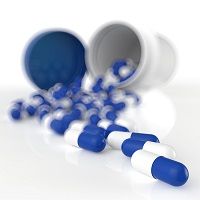Alemtuzumab Effective in Difficult-to-Treat Behçet disease
A long-term study of alemtuzumab for treatment of Behçet disease (BD) yields promising evidence that the monoclonal antibody can successfully treat refractory and relapsing courses of the disease.

A long-term study of alemtuzumab for treatment of Behçet disease (BD) yields promising evidence that the monoclonal antibody can successfully treat refractory and relapsing courses of the disease.
Relapsing and refractory almost seems like a redundancy when discussed in conjunction with BD, a condition that is rare (particularly in the United States) but is notoriously difficult to diagnose and treat and behaves differently from other autoimmune diseases. Inflammatory eye disease can develop early in the disease course and lead to permanent vision loss in 20% of cases.
Alemtuzumab (marketed by Bayer under the brand name Lemtrada®) is generally not considered first-line therapy for BD — which is typically treated, with varying effect, with high-dose corticosteroid therapy or anti-TNF therapy. Alemtuzumab was approved by the Food and Drug Administration (FDA) for chronic lymphocytic leukemia and has been used tried recently in multiple sclerosis therapy. Significant questions about alemtuzumab’s adverse event profile – which can include pulmonary infiltrates, cardiac arrhythmias, myocardial infarction, and cardiac arrest – delayed its approval in the United States for some time.
Because BD can linger dormant for long periods, the need for long-term study of treatment is profound. The recent study, published in The Journal of Rheumatology, looked at the success of alemtuzumab over 20 years in 32 patients (22 of whom were women) with refractory and relapsing BD. The study not only looked at long-term results, but at three separate dosages: 134 mg in 21 courses (Group 1), 95 mg in 18 courses (Group 2), and 60 mg in 21 courses (Group 3). Immunosuppressive drugs were stopped at the time of alemtuzumab, and prednisolone was reduced according to clinical response. Treatment response was assessed by clinical status, inflammatory activity, prednisolone dose, and the need for subsequent immunosuppressive drugs and disease relapse.
After the first alemtuzumab course, 27 of 32 patients (84%) achieved partial or complete remission (CR). Fifty of 60 courses (83%) resulted in remission (66% CR) without differences in remission rates between dosing regimens. Profound lymphocyte depletion occurred after all courses. Relapse-free survival rates were 83.6% at 6 months and 52.8% at 12 months, and were higher among Group 1 patients (Group 1: 100% and 77.8%, Group 2: 81.3% and 37.5%, and Group 3: 65.0% and 37.1%, p < 0.001). Eight patients (25%) developed symptomatic thyroid disease.
Even in cases in which treatment was successful, relapse was common. Adverse events included infusion reactions and new autoimmunity. The researchers indicated that relapse may be associated with lower dosing of alemtuzumab. Further study involving larger cohorts and control groups is a likely follow-up.